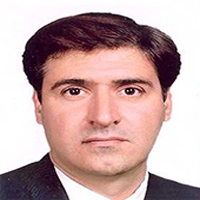Quantification of soil water infiltration parameters using scaling
Quantitative description of infiltration process is needed for both irrigated and rainfed agriculture for optimal management and designs purposes. The most difficult task in the field, however, is to determine the spatial variability of infiltration process, which is of great importance for precision agriculture. The objective of this study was to quantify spatial variability of infiltration models by using scaling in Kavar plain, east of Shiraz, Iran. A number of 161 infiltration experiments were conducted on a systematic squared grid pattern with 500*500m over the 4000 ha area, using double-ring method. The observed infiltration data from all the experimental sites were fitted to three selected infiltration models. The best-fitted model for individual sites was identified. Using the least-squares technique, the Philip model was selected as the best model to describe infiltration process. Infiltration rates of the area generally indicated low basic infiltration rates (1.11–31.11 cm hr−1) for most sites, and average amount of them was 6.69 cm hr−1. The parameters of Philip model (S and A) showed a wide variation among the test sites. The sorptivity-based scaling factor αS and the transmissivity-based scaling factor αA were computed and the observed infiltration data were scaled. Scaling achieved through αA was found better than through αS. Optimum scaling factors αopt were then obtained by the least-squares. Scaling factors based on the arithmetic, geometric and harmonic means of αS and αA were
-
Efficiency of UV, O3, and combined UV/O3 methods in cyanide degradation from synthetic wastewater
Mahsa Niazi, Ahmad Jamshidi*,
Quranic Knowledge Research, -
Effect of Different Culture Media on the Growth of Soil Cyanobacteria for Soil and Water Conservation
Atefeh Jafarpoor *, Seyed Hamidreza Sadeghi, , Behrouz Zarei Darki
Applied Soil Reseach,


